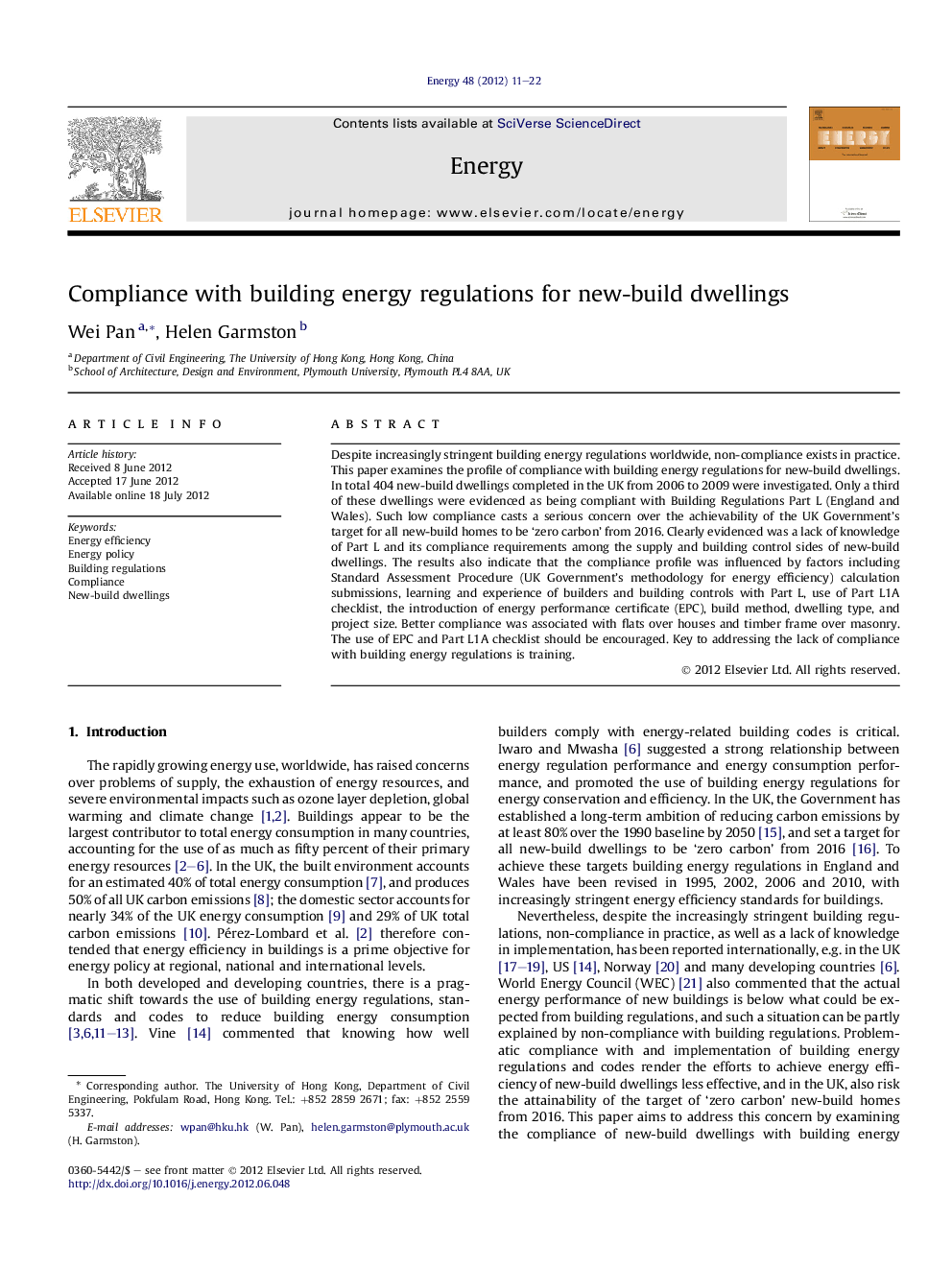| Article ID | Journal | Published Year | Pages | File Type |
|---|---|---|---|---|
| 1733320 | Energy | 2012 | 12 Pages |
Despite increasingly stringent building energy regulations worldwide, non-compliance exists in practice. This paper examines the profile of compliance with building energy regulations for new-build dwellings. In total 404 new-build dwellings completed in the UK from 2006 to 2009 were investigated. Only a third of these dwellings were evidenced as being compliant with Building Regulations Part L (England and Wales). Such low compliance casts a serious concern over the achievability of the UK Government's target for all new-build homes to be ‘zero carbon’ from 2016. Clearly evidenced was a lack of knowledge of Part L and its compliance requirements among the supply and building control sides of new-build dwellings. The results also indicate that the compliance profile was influenced by factors including Standard Assessment Procedure (UK Government's methodology for energy efficiency) calculation submissions, learning and experience of builders and building controls with Part L, use of Part L1A checklist, the introduction of energy performance certificate (EPC), build method, dwelling type, and project size. Better compliance was associated with flats over houses and timber frame over masonry. The use of EPC and Part L1A checklist should be encouraged. Key to addressing the lack of compliance with building energy regulations is training.
► There exists a lack of compliance, worldwide, with building energy regulations. ► The implementation of England and Wales building energy regulations is problematic. ► Training, learning and experience of builders and building control are critical. ► Energy performance certificate and Part L 2006 checklist helped achieve compliance. ► Flats achieved better compliance over houses; and timber frame over masonry.
